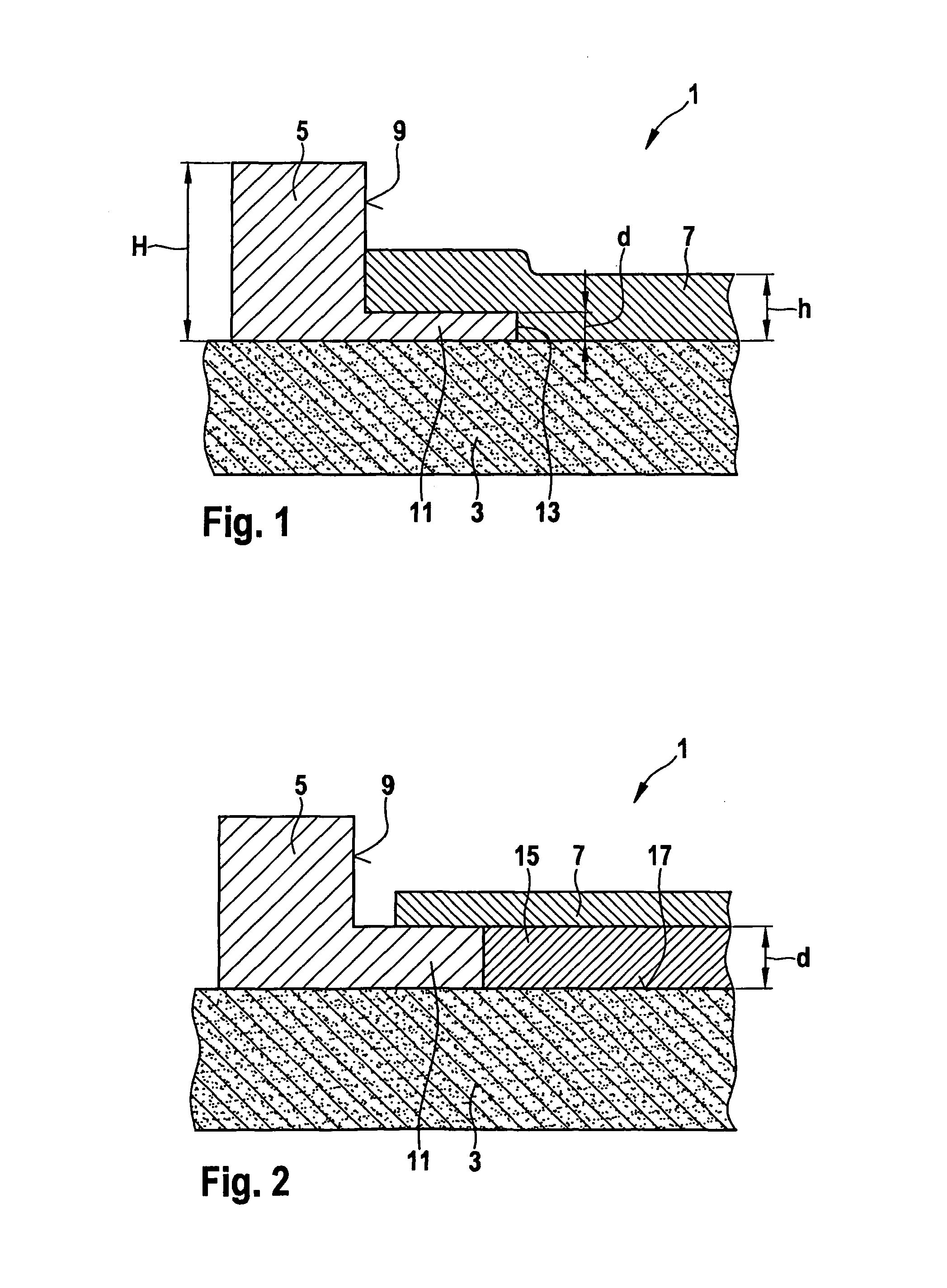Electronic component
a technology of electronic components and components, applied in the field of electronic components, can solve the problems of reducing the functionality of electronic components, reducing reducing the selection of suitable film materials, etc., and achieves the effects of reducing the functionality of electronic components, reducing the tendency to oxide formation, and good electrical conductivity
- Summary
- Abstract
- Description
- Claims
- Application Information
AI Technical Summary
Benefits of technology
Problems solved by technology
Method used
Image
Examples
Embodiment Construction
[0023]FIG. 1 illustrates a cross section of a detail of an electronic component. An electronic component 1 includes a substrate 3 to which a printed conductor structure 5 is applied.
[0024]Substrate 3 may be made of any desired material known to those skilled in the art. Substrate 3 is usually made of an electrically insulating material or a semiconductor material, for example. The selection of the material for substrate 3 depends on the intended use of the electronic component. Electrically insulating materials of which substrate 3 may be made are sapphire or SiO2, for example.
[0025]If the electronic component is to be used as a gas-sensitive field effect transistor, for example, substrate 3 is preferably made of a semiconductor material. Typically used semiconductor materials are, for example, semiconductor materials having a band gap greater than 2 eV. Of these, GaN and SiC are particularly preferred.
[0026]Printed conductor structure 5 is usually made of a material having good ele...
PUM
 Login to View More
Login to View More Abstract
Description
Claims
Application Information
 Login to View More
Login to View More - R&D
- Intellectual Property
- Life Sciences
- Materials
- Tech Scout
- Unparalleled Data Quality
- Higher Quality Content
- 60% Fewer Hallucinations
Browse by: Latest US Patents, China's latest patents, Technical Efficacy Thesaurus, Application Domain, Technology Topic, Popular Technical Reports.
© 2025 PatSnap. All rights reserved.Legal|Privacy policy|Modern Slavery Act Transparency Statement|Sitemap|About US| Contact US: help@patsnap.com


